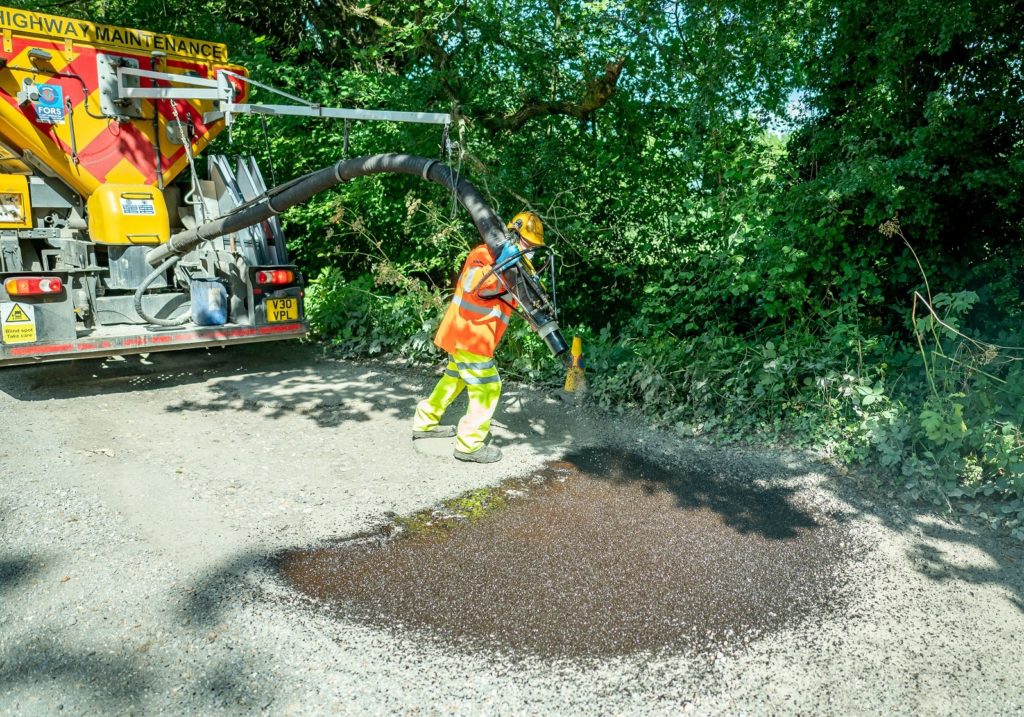
Velocity by name, fast, low-carbon response by nature in fight against potholes
Innovation continues to be explored by West Sussex County Council in its fight against an age-old issue: potholes. The Velocity road patching system is being deployed proactively to treat areas of carriageways even before routine inspections have highlighted issues.
Results half-way through a six-month trial with Velocity have been impressive, with:
- More than 1,100 separate repairs in three months
- A total of approximately 5,500 square metres of patching, or just under five square metres per repair.
How Velocity works:
- High-velocity air is used to remove all dust and debris and open-up cracks at the bottom of the pothole to ensure a solid, stable repair
- A cold bitumen emulsion is forced into every crack and crevice under pressure, sealing it and making it water-tight
- The operator switches on the aggregate mix, which is fired at high velocity through a nozzle, evenly coating the granules with bitumen emulsion and building up the waterproof seal, with no joints
- If required, the aggregate mix is compacted with a “wacker plate” and the repair is traffic ready – far faster than by traditional methods, reducing the time needed for traffic management.
Velocity managing director Dominic Gardner said: “There’s no excavation, no waste, often no need for road closures, and repairs are ready to drive on in minutes. The repairs cost a third of the price of traditional techniques, and because there’s no heat involved, it’s also exceptionally low on carbon emissions.”
Joy Dennis, County Council Cabinet Member for Highways and Transport, witnessed the Velocity patcher in action and commented: “It was impressive and can be used both proactively and reactively. Officers are continually looking at innovation in the fight against potholes and, working with our contractors, exploring lower-carbon methods in maintaining the highway.”
Peter Walsh, Area Director for Balfour Beatty, said: “As the provider of highway maintenance services for West Sussex County Council, it’s rewarding to see our collective teams investing in better ways to deal with the challenge of potholes ahead of inspections and with the aim of improving the experience for all road users.”
Fixing potholes is important, but the County Council also has an ongoing, £17million programme of investment in roads and footways across West Sussex. It represents one of the biggest investments in the county’s highway infrastructure in the last decade and includes a significant number of road resurfacing schemes: resurfacing a road produces a smoother surface, reducing road noise and increasing resilience to potholes – a longer-term solution to pothole issues.
